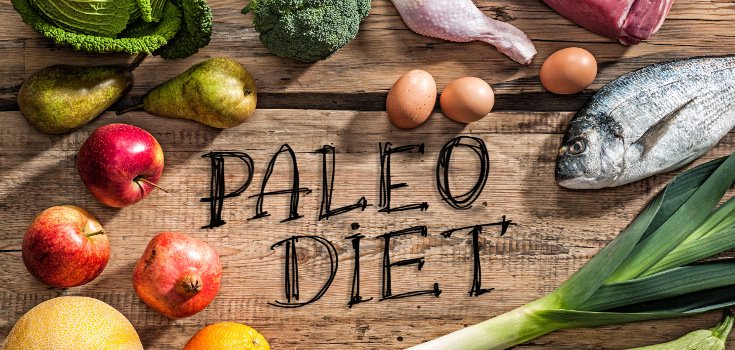Why Research Points to the Paleo Diet as a Health Solution

New statistics have recently been released showing that Australian sales of bread and pasta have dropped by 30% in the last 3 years. Not surprisingly, this has led to a great deal of handwringing among conventional physicians and dietitians who are concerned about the food pyramid being abandoned for so-called “fad diets” such as the Paleo Diet, despite the fact that this and other gluten-free diets have benefited so many.
One of their main concerns is a perceived lack of fiber in these diets, despite the fact that there are many other plant foods that are rich in fiber. For example, one orange or half a cup of sweet potato contains more fiber than a serving of bread.
Another concern is a perceived lack of folate, as much of the bread sold in Australia is fortified with it. But again, many foods that are consumed in a Paleo diet are also being high in this nutrient – especially beef. So nothing to fear there, either.
What the media also failed to acknowledge is that research, including that on individuals with a rare genetic disorder known as Laron Syndrome, has uncovered a potential role for the Paleo diet in reducing chronic disease. These individuals have a severe congenital deficiency of insulin-like growth factor 1 (IGF-1), which results in a reduced prevalence of acne, cancer, and diabetes.
In fact, a survey of 230 people with Laron Syndrome found that none of them had ever developed cancer. Unfortunately, the conventional Western diet overstimulates IGF-1, due to a high intake of insulinotropic dairy, grains, and sugar. However, the “infamous” Paleo Diet forbids the consumption of dairy and most grains, as well as processed foods, and is therefore far less insulinotropic.
Read: Scientists Compares Top Diets, Concludes REAL Food is Best
One mechanism behind a less insulinotropic diet’s health benefits is that it does not impair the body’s antioxidant defenses, which are essential in protecting against chronic diseases. They also do not suppress immunity or over-encourage angiogenesis and migrating cell’s adhesion abilities. As for diabetes, high consumption of dairy products may over-stimulate the insulin producing beta cells of the pancreas, further contributing to oxidative stress.
While restricting intake of added sugar, grains, and dairy can protect adults against chronic illnesses such as cancer, diabetes, and even Alzheimer’s disease, it may be unsuitable for healthy children. This is because sufficient IGF-1 levels are likely to be important for the development of the reproductive and nervous systems at young ages.
Alongside this study, many authors have argued that following a “Paleolithic-type” diet can reduce the risk of diseases such as cardiovascular disease, some cancers, diabetes, metabolic syndrome, and even osteoporosis and age-related muscle loss. In fact, some have stated that avoiding the foods forbidden by the Paleo diet is more important than calorie or carb-counting in improving glucose metabolism, based on their findings in diabetic patients.
A study on diabetic patients instructed to transition from a standard diet to a Paleo diet showed a decrease in LDL and VLDL cholesterol as well as triglycerides, blood pressure, and fasting insulin, which dropped by 68%!
Interestingly, while the Paleo diet prescribed was higher in protein (30% as opposed to 18% of calories), it was only lower in carbohydrates by 6 percentage points of energy intake. This contradicts the common assumption that a Paleolithic diet is mostly meat and fat.
As for cancer, a study on men tested for their IGF-1 levels found that higher levels of IGF-1 were associated with a progressively higher risk of cancer death. The risk of fatal cancer in men with IGF-1 above 100ng/mL was 82% higher than it was for men with lower levels, and IGF-1 levels over 120ng/mL increased cancer risk by anywhere from 61% to 161%.
Related: M.D. Reveals 6 Real-Life Health Transformations Using Real Food
These findings also contradict a study stating that people on higher protein diets have a higher cancer risk than those consuming a low protein diet. However, this study is a terrible weapon against the Paleo diet, as much of the aforementioned protein would be coming from dairy and hormone-treated, grain-fed meat (highly unpopular in Paleo circles), while sugar and processed carbohydrate intake was unspecified.
The authors also admitted that a high protein diet was in fact beneficial for participants of an advanced age! It must be remembered that beef has a much lower insulinaemic index (51) than milk (140), and that not all “Paleo” diets are identical.
Overall, the Paleo diet in its many forms has been shown to have a multitude of health benefits, but as each person is different, there is no specific dietary advice that is right for all – especially not the widely-taught food pyramid.

I’m on the paleo diet myself and love it. I have lost a lot of weight and I feel much better with much more energy and positivity..
The beauty about the paleo diet is that whilst there is a focus on good foods, there are so many resources to help you make these into delicious recipes.